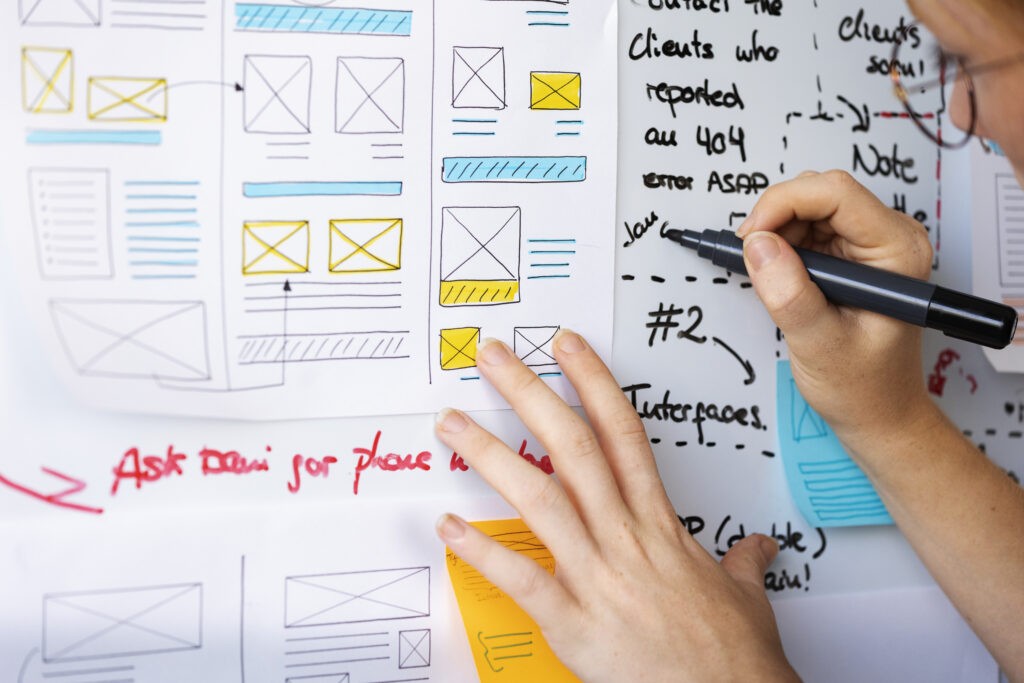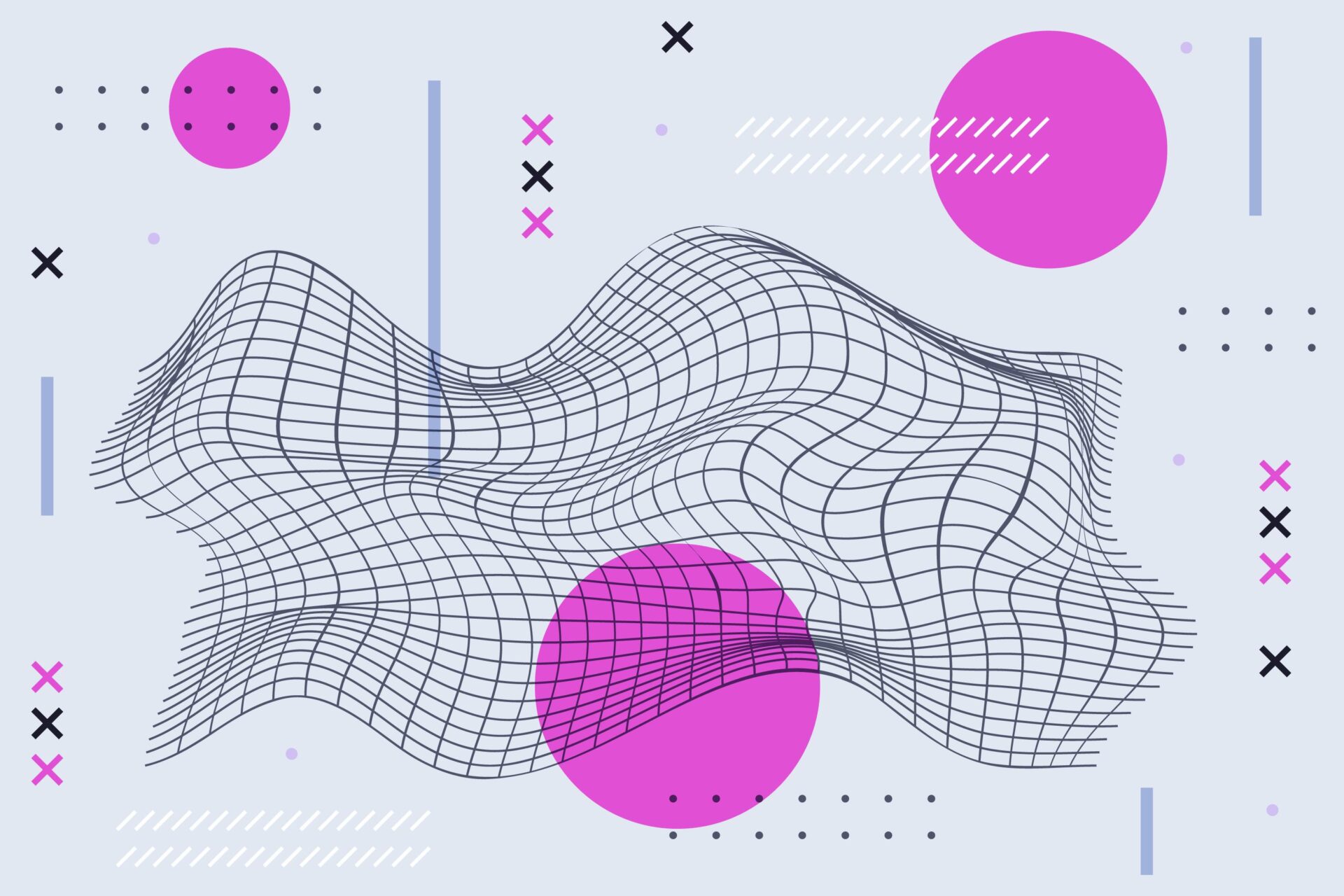TLDR: Don’t have in-house UX designers? From competitive analyses for product design to delivering next-level customer experiences, here’s what a UX team and the design thinking process can do for your next product development project.
What makes a great product? Delivering incredible customer experiences that maximize business results and ROI. And what’s the goal of user experience (UX) designers and product designers (PD)? Building products that drive value for customers and businesses.
So for leaders who aspire to build the next great product, that means design thinking just might be the most powerful tool in your toolkit that you’re not fully harnessing. But many companies — including enterprise organizations — don’t yet have their own in-house UX design or product design teams, or they’re not sure where to begin when hiring and working with these teams.
Blankfactor’s UI/UX Design Director Carlos Monge shares everything leaders should know about the ROI of UX and how to grow their products and companies through the power of the design thinking process.
The intersection of UX design and product development
That the customer experience should be at the center of product design has become more than just a good idea. It’s all but a mandate. Some numbers suggest that each dollar that companies invest in UX design will deliver $100 — a staggering 9,900% return.1 But if you’re thinking about partnering with a UX design team, you’ll probably want to know more about their place in the product development process.
Let’s clarify this common point of confusion: someone with the title of “UX designer” will occupy many of the same roles as a product designer, especially before the product’s launch. Expect a UX design team to be involved in the entire end-to-end process of a product’s creation and development, from identifying business opportunities and user pain points to testing and iterating product prototypes.
<< Project story >>
Our current customer, one of the top five largest airline companies in the U.S., wanted to build an e-commerce product and framework. Our UX design team led the product design process from end to end, from defining the product vision to usability analysis to building prototypes.
But imagine a scenario where you need a UX design team to stay on with the project long-term after the product goes to market. You want to test and perfect the product throughout its lifecycles as you learn more about your customers and their engagement trends. Your UX design team can do that, too, supporting post-launch initiatives as you analyze performance and feedback.
UX research activates next-level product development
When you’re launching a new product or optimizing an existing one, you want to know that you’re making decisions based on data — from market research to competitive analysis.
What companies may not know is that your UX design team will be collecting and studying that data to fuel product ideation, design, and iteration. Depending on the project, your customers, and your business needs, your UX team may tap into a range of research methodologies, including:
- User experience research: Analyzing how your customers will engage with the product
- Competitive analysis: Examining your competitors and your product’s unique potential in the market
- Stakeholder interviews: Facilitating one-on-one conversations with those who hold a vested interest in the product’s success
- Story mapping: Creating a brief, specific overview of what your customers want to accomplish with the product (i.e., signing up for an account, locating checkout, etc.)
<< Project story >>
Our airline client lacked usable customer data, and they needed support designing the product without it.
As an alternative approach, our UX design team delivered a highly-detailed competitive analysis for next-level product development. While our client thought that analyzing their product design potential meant looking only at direct competitors in the airline industry, our UX designers proposed a broader scope that would harness top-performing design approaches both inside and outside the industry.
That means a fresher, more surprising, and more engaging experience for end users — and with higher engagement, unlocked revenue streams for the client.

Not just visuals: UX team deliverables and the design thinking process
You may have a sense of what designers do, and you may anticipate that visual design is number one on the list. But because your UX design team will be involved in all stages of product design, they’ll be creating much more than graphics.
It’s true: expect your UX design teams to play the central role in creating the look and feel of a digital product. But mobile apps, web platforms, and other digital products involve customer interaction — not passive views — and can deliver substantial business value potential. For that reason, your UX team will play several roles, from product discovery to solutions ideation to prototyping and iteration to considering your customers’ emotions in context.
While every project is unique, here are the core steps in the design thinking process and deliverables you can expect from a UX design team:
1. Defining the product vision: Understanding customer needs and identifying market potential.
2. Product research: Conducting a competitive analysis, user experience analysis, and more.
3. User analysis: Researching and building a blueprint for the user experience and how customers will interact with every part of the digital product.
4. Ideation: Brainstorming possible product solutions.
5. Design: Creating wireframes and prototypes for every aspect of product’s design, including interactive and visual elements.
6. Testing and validation: Ensuring the product’s usability and function by assessing prototypes’ performance with participants through various testing models.
Depending on the project, your UX team may even be involved in some post-launch activities, continuing the research, design, and testing process as needed.
<< Project story >>
At the outset, our airline client knew what they needed: support with visuals and code to develop their e-commerce product. But they weren’t exactly sure what UX design could do for the project or what to expect for the ROI of a UX investment.
Once the client understood the extensive deliverables involved, they saw exactly how UX design fuels product development — and the value the UX team was creating in steering the project’s conception and implementation.
Fuse design thinking, engineering, and the latest data technologies
You might be able to stand up a digital product without UX design — but we’d have big doubts about its performance. With UX/PD teams involved, you can pioneer a game-changing, high-ROI product that delivers deep customer value.
And why stop there?
With the fusion of UX designers, software engineers, and experts in the latest technologies — like data engineering, machine learning and artificial intelligence, blockchain, and more — you can power your products with the best insights and capabilities available.
<< Project story >>
Our airline client not only wanted to refresh the customer experience through e-commerce products, but the company wanted to leverage blockchain technology to develop its e-gift card offerings.
Working with our UX designers, software developers, and blockchain engineers, our client took a leap forward into the future with a next-generation digital payments solution.
With a digital innovation partner, unlock your product potential
You don’t have to hire a whole new team to unleash all that the latest trends in design and engineering can do for your company.
With Blankfactor, maximize the ROI of a UX investment. Work with our expert cross-functional teams to build industry-leading products and future-forward solutions for your business and customers. Whether you’re looking to build a new product, revamp existing products or systems, or transform your capabilities for a digital-first future, we can design, code, and strategize your roadmap forward.
Contact us today for a 60-minute solution session.
Resources
Featured images from
Author







